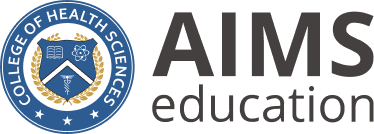EKG / PHLEBOTOMY TECHNICIAN
Length
2 Months
Schedule
Monday - Thursday
9:00am to 2:00pm
Financial AidFederal student aid is not available for this program.
NO
Other Financial AssistanceOther financial assistance may be available for this program (scholarships, training grants, payment plans, etc.). Please contact our financial aid department to learn more.
YES
Length
2 Months
Schedule
Monday - Thursday
9:00am to 2:00pm
Financial AidFederal student aid is not available for this program.
NO
Other Financial AssistanceOther financial assistance may be available for this program (scholarships, training grants, payment plans, etc.). Please contact our financial aid department to learn more.
YES
Phlebotomy Technical and Health Standards
Technical Standards
The prospective phlebotomy student must possess sufficient strength, motor coordination, and manual dexterity to:
- Provide quality patient care as it pertains to performing phlebotomy procedures.
- Stand and walk for 70% of the time.
- Tolerate standing while performing blood work.
- Perform transfer techniques (wheelchair or stretcher to patient bed)
- Move equipment (on wheels) to other areas of a facility in order to perform studies according to established standards.
The prospective phlebotomy student must:
- Have sufficient eye/hand coordination skills related to the performance of phlebotomy procedures.
- Be able to use senses (vision, hearing, smell and touch) to recognize changes in a patient’s condition and needs.
- Be able to hear, understand, and react quickly to verbal instructions and patient needs, including but not exclusive to hearing codes, alarms, and patient calls.
- Be able to maneuver in the laboratory, around instruments, in confined spaces, and in patient rooms.
- Be able to manipulate small objects and control adaptive devices using glove technique.
Health Standards
The prospective phlebotomy student must be able to consistently demonstrate emotional, mental, and physical health in order to:
- Meet the demands of the job including handling stressful situations related to technical and procedural standards and patient care situations.
- Provide physical and emotional support to the patient during Phlebotomy procedures.
- Carry out all assigned duties.
- Perform Phlebotomy procedures according to established OSHA standards.
- Collect and process biological fluids.
- Identify proper protocol, procedural sequencing, technical qualities, and identification of pathology.
- Distinguish red, yellow, and blue colors. Distinguish clear from cloudy fluid.
Communication Standards
The prospective phlebotomy student must be able to consistently demonstrate effective communication in order to:
- Enunciate clearly in English (language interpreter if the patient does not speak English) with patients of diverse ethnicities and cultures.
- Accurately elicit information from patients, family members, and team members.
- Use standard professional medical terminology when documenting a patient’s electronic health record.




















